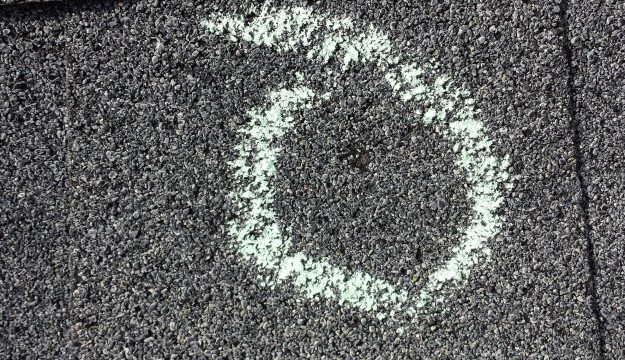
START YOUR CLAIM HERE
The Phoenix Roofers will come out, assess the damage, and begin the process with your insurance company.
Phoenix is the regional leader when it comes to getting your home restored for minimal amount out of your pocket. We’ve handled thousands of claims throughout the years, and our process makes it simple and stress-free for home and property owners.
The Phoenix Roofers will come out, assess the damage, and begin the process with your insurance company.




Contract Price: RCV Value on insurance scope & summary. * RCV = replacement cost value
There are different ranges of wind, all indicative of their strength and direction. The Beaufort Wind Force Scale outlines the various wind strengths from a calm force 0 (less than 1 mph) to a hurricane-level force 12 (73+ mph). The Beaufort scale describes force 8 to be what’s called a fresh gale of wind, blowing at 39-46 mph.1 This is when you’ll start to see pieces of trees breaking and blowing around. A strong gale of wind blows at 47-54 mph and becomes a bigger threat to your home, particularly the shingles on your roof. When it comes to your home, your roof, along with your doors, windows and garage are the four most wind-damaged areas of a home.
1Source: http://stormguardrestoration.com/wind-damage-to-your-home/
Rupturing of the reinforcing mat represents a potential loss in the shingle’s water-shedding ability in that a ply of roof covering is removed by the rupture. The loss in water-shedding ability increases the potential for water to reach the roof fasteners, causing corrosion or the butted joints in the sheathing, permitting water to enter the interior of the building. A roof that has been impacted by hailstones is typically easily recognized. As the hailstones impact the surface, impact marks where gray-colored oxidation and organic surface growths have been removed, are recognizable new features in the roof’s appearance. Other things to look for after a hail storm are holes in your vinyl siding and dents to your doors, shutters, chimney caps and exhaust covers. Check your roof carefully. Be sure to cover any holes (or cracks) in your roof or broken windows so that water can not enter your home and damage the interior and your possessions.
ICE DAMS: This happens when warm air from inside the home melts the snow on your roof. Without anywhere to drain the water freezes during the night and creates an ice dam. These dams expand over several hours, days, and weeks, and can put upward pressure under the shingles to cause leaks and damage to your roof and underlayment. You can prevent ice dams by making sure that your gutters are clear of debris (leaves, twigs, dirt, shingle residue) and installing a gutter guard. Also be sure to Insulate your attic floor to prevent warm air in your house from escaping. Furthermore, ensure that the attic is ventilated to keep it cool. BURST PIPES: This is one of the most common (and most expensive) winter issues. It usually happens if the heat turns off (or breaks) during cold days/weeks and the homeowners are not home. Also, exterior walls that contain pipes that are not properly insulated or winterized. SNOW: Snow buildup on your roof can be catastrophic and can cause damage to chimneys, vents, and roofing systems. Just two feet of snow on the average home can weigh 38,000 pounds or 19 tons. ICICLES: Icicles will appear when snow melts and freezes again overnight, but if they are a regular feature during the winter you may want to check your insulation. Icicles can indicate areas where warm air from the home is leaking out through the roof. Safely remove icicles with a roof rake to prevent damage to property or people when they fall. DEAD BRANCHES: Clear branches close to your home as soon as possible. A large snow or ice storm may cause them to break and damage your home or property. ICY WALKWAYS: If your pathways tend to get slippery, make every effort to keep them clean when it snows. Obviously injuries on your property could be expensive, but the ice can damage and dislodge the paving or concrete underneath. You can start by using a non-corrosive salt or deicer, or you can opt for environmentally friendly alternatives. Break up ice on the sidewalk and pathways and spread builder’s sand over the top to improve grip for those who will walk on it.
![]() The Phoenix Roofers Quick Tip: After a hailstorm, check the trees, shrubs and plants around your home. If they are stripped of foliage, there is a possibility your roof is damaged. Also, if patio furniture, screens or roof vents are dented, there may be roof damage.
The Phoenix Roofers Quick Tip: After a hailstorm, check the trees, shrubs and plants around your home. If they are stripped of foliage, there is a possibility your roof is damaged. Also, if patio furniture, screens or roof vents are dented, there may be roof damage.
“After a bad hailstorm we noticed granules of roofing material under our downspouts and damage to our siding at our Millville, NJ Home. On the recommendation of a neighbor we called Phoenix Roofing. Brian and Ron from Phoenix Roofing inspected our house and determined that there was damage to our entire home. We then called our insurance company and filed the claim. Brian and Ron were there when the claim adjuster inspected our home. It was determined that we need to replace our roofing, siders, gutters, facia, shutters, etc.
Brian and Ron were great! They helped us with all the paperwork and guided us throughout the entire process. Once Phoenix Roofing took over all we had to do was sit back and watch. All the repairs were done professionally and skillfully. The roofing crew, siding crew, and gutter crew all did great jobs and we’re meticulous in cleaning up afterwards.
We highly recommend Phoenix Roofing for any job, anywhere, anytime. They do professional quality work and are great people to deal with. Thank You Phoenix Roofing for making our home look like a million dollars.”
![]()